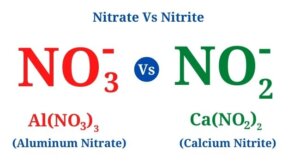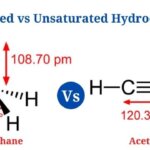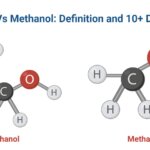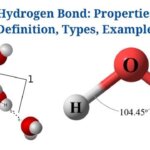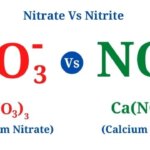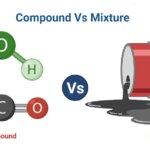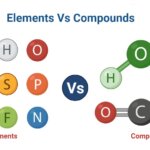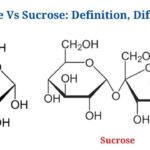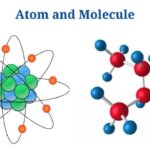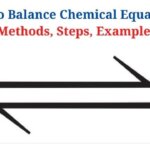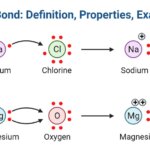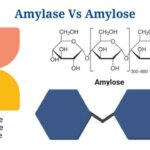Definition of Nitrate
Nitrate is a nitrogen oxoanion with a charge of -1, one nitrogen atom, and three oxygen atoms generated by the loss of hydrogen from nitric acid.
- It’s a polyatomic ion with the chemical formula NO3– that’s widely found in fertilizers and explosives in the form of salts.
- Nitrate is a conjugate base of nitric acid and is a monovalent inorganic anion. It can combine with a variety of metals to generate salts.
- The trigonal planar structure of the nitrate ion features a center nitrogen atom surrounded by three equally bound oxygen atoms.
- The ion’s total charge is -1, with each oxygen atom having a -2/3 charge and nitrogen having a +1 charge.
- Because the nitrogen atom in the molecule has an oxidation state of +5, nitrates can operate as oxidizing agents.
- Nitrates, which are found in the form of inorganic nitrates in leafy vegetables, are also necessary in the diet of living things. Nitrates can also be found in drinking water.
- Nitrate salts are found in deposits and rocks all over the world. Nitrifying bacteria create these from nitrogen molecules.
- Because of their great solubility and biodegradability, nitrates are most commonly used as fertilizers in agriculture.
- Nitrates are utilized as oxidizing agents in the manufacturing of metal products in industries.
- Nitrates include sodium nitrate, aluminum nitrate, magnesium nitrate, and other metal nitrates.
Definition of Nitrite
Nitrite is a nitrogen polyatomic anion created when hydrogen atoms from nitrous acid are lost, leaving one nitrogen atom and two oxygen atoms.
- During the oxidation of ammonia to nitrate, nitrites are typically formed as intermediate intermediates.
- Nitrite has the chemical formula NO2– and is the conjugate acid of nitrous acids, HNO2.
- However, the term nitrite can also refer to chemical molecules that include the –ONO group and are nitrous acid esters.
- Because the nitrogen atom in the molecule has an oxidation state of +3, nitrites can operate as both oxidizing and reducing agents.
- The nitrite ion’s structure is bent, having an O-N-O bond angle of roughly 120°C.
- The ion has a symmetrical structure with identical lengths and bond angles for both N-O bonds. The ion has a resonance hybrid because it exists in two separate forms that are mirror reflections of each other.
- In the presence of nitrifying bacteria, nitrite is converted to nitric oxide or ammonia, making it an important intermediary in the nitrogen cycle.
- It’s also utilized in diazotized azo dyes and other colorants. Some nitrites, such as sodium nitrite, are used to preserve food.
- Nitrite levels in food and water samples that exceed the recommended amounts can cause a variety of ailments in humans. N-nitrosamines are formed when nitrates are consumed in the diet, and they are known to induce stomach cancer.
Key Differences between Nitrate and Nitrite
(Nitrate Vs Nitrite)
[ninja_tables id=”5674″]
Nitrate Examples
Magnesium Nitrate
- Magnesium nitrate (Mg(NO3)2) is an inorganic magnesium nitrate salt with the chemical formula Mg(NO3)2.
- Magnesium nitrate is a hygroscopic material that produces hexahydrate fast in the presence of moisture. Mg(NO3)2.6H2O is the hygroscopic form of the chemical.
- It occurs as a white crystalline solid that, when burned, emits deadly nitrogen oxides.
- Although it can be collected naturally from mines and caves, commercial magnesium nitrate is made by reacting nitric acid with magnesium ions.
- Alkali nitrates are formed when magnesium nitrate combines with alkali metal hydroxides.
- Because magnesium nitrate is hygroscopic and has a strong affinity for water, it decomposes into magnesium oxide, oxygen, and other oxides when burned.
Nitrite Examples
Sodium Nitrite
- Sodium nitrite has the chemical formula NaNO2 and is an inorganic sodium salt.
- It’s a yellowish-white crystalline substance that’s employed as a food preservative.
- It is non-combustible on its own, but it has the potential to speed up the combustion of other materials. However, in big concentrations, it may cause fire and explosions.
- Sodium nitrite is the most common nitrite salt and has a wide range of industrial applications.
- It’s used in a variety of items, including medicines, colors, and fertilizers, but it’s most commonly employed as a food additive.
- Despite its industrial usefulness, it can be fatal to humans if taken in excess of 71 mg/kg.
- Sodium nitrite, which does not occur naturally in vegetables, has been found in high concentrations in such goods as a result of its usage as a fertilizer.
Nitrate Vs Nitrite Citations
- Gautum SD, Pant M and Adhikari NR (2016). Comprehensive Chemistry, Part 2. Sixth Edition. Heritage Publishers and Distributors Pvt. Ltd
- National Center for Biotechnology Information. PubChem Compound Summary for CID 25212, Magnesium nitrate. https://pubchem.ncbi.nlm.nih.gov/compound/Magnesium-nitrate. Accessed Mar. 26, 2021.
- National Center for Biotechnology Information. PubChem Compound Summary for CID 23668193, Sodium nitrite. https://pubchem.ncbi.nlm.nih.gov/compound/Sodium-nitrite. Accessed Mar. 26, 2021.
- https://www.differencebetween.com/difference-between-nitrate-and-vs-nitrite/
Related Posts
- Dissecting Microscope (Stereo Microscope) Definition, Principle, Uses, Parts
- Saturated vs Unsaturated Hydrocarbons: Definition, Differences, Examples
- Ethanol Vs Methanol: Definition and 10+ Differences
- Hydrogen Bond: Properties, Definition, Types, Examples
- Nitrate Vs Nitrite: Definition, Differences, Examples
- Aromatic Compounds vs Aliphatic Compounds: Definition, Differences, Examples
- Compound Vs Mixture: Definition, Differences, Examples
- Elements Vs Compounds: Definition, Differences, Examples
- Molecules Vs Compounds: Definition, Differences, Examples
- Hard water Vs Soft water: Definition, Differences, Examples
- Glucose Vs Sucrose: Definition and Key Differences
- 13+ Difference Between Atom and Molecule with Examples
- How to Balance Chemical Equation: Methods, Steps, Examples
- Ionic Bond: Definition, Properties, Examples
- Amylase Vs Amylose: Definition, Differences, Example

